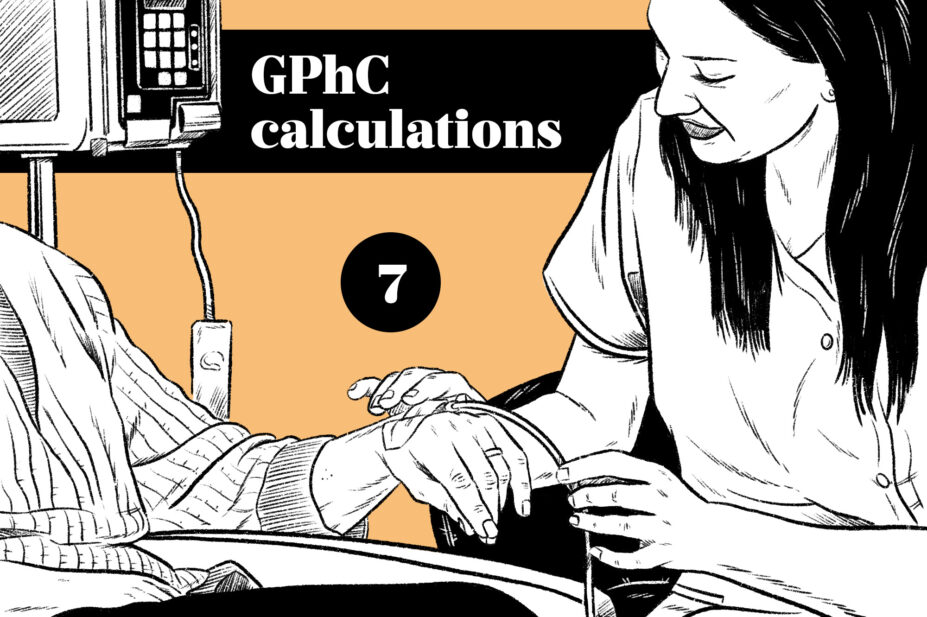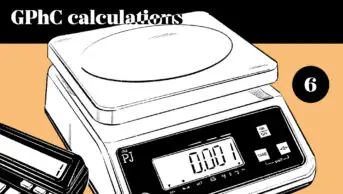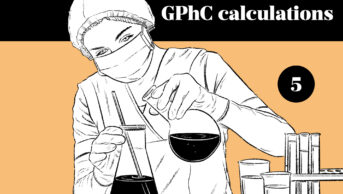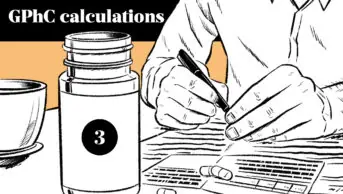
Wes Mountain/The Pharmaceutical Journal
By the end of this article, you should be able to:
- Understand how concentration expressed as % (w/v) can be used to work out the required volume of a liquid medicine;
- Calculate the amount of product a patient will receive from a dose given in mg/kg;
- Use the infusion rate to work out the total volume of product a patient will receive;
- Follow instructions regarding adjustments to infusion rates and maximum rates that are not to be exceeded.
Introduction
The administration of drugs by infusion is used when rapid, precise or continuous delivery of a drug is required, or when other routes of administration are not feasible or effective. Drug infusion calculations are vital to ensure safe, accurate and effective medication administration, which ultimately leads to better patient outcomes. The rate of infusion can be changed for several reasons, such as changes in the patient’s condition or as a requirement of the medicine to ensure proper absorption and to minimise side effects.
The knowledge required to perform infusion calculations is closely related to dilutions because most infusions are diluted before use. Infusion calculations will therefore require that you understand dilution procedures, definitions of the various forms of concentration and dilution terminology that may be encountered and the conversion of units. It is recommended that you read ‘Medication maths: dilutions’ before reading this article.
Exam questions may ask for doses to be calculated in metric units of weight (e.g. milligram, microgram, nanogram); as rates (e.g. mg/hour, mL/hour, mL/kg/hour); or as duration of time (e.g. seconds, hours, days). A list of potential units related to infusions are made available by the GPhC in the assessment framework.
Example question
A 60-year-old woman weighing 50 kg is prescribed LEDPM (immunoglobulin) 5% (w/v) 600 mg/kg as follows:
1mL/kg/hr for 30 mins;
2mL/kg/hr for 30 mins;
4mL/kg/hr for 30 mins; and
*8mL/kg/hr* to complete the infusion.
[*Rate not to exceed 300 ml/hour*].
Calculate the total infusion duration in minutes. Round your answer to the nearest whole minute.
Comments and explanations
This question requires you to identify the most important information provided in the scenario and use it to calculate any missing information that is needed for you to be able to work out the final answer.
You will need to review how the prescription has been expressed, compare this with the units and expressions of concentration used by the medicine and accurately account for the different rates of administration requested by the scenario. Finally, you are required to round to the nearest whole minute. You should take care with the specific wording used within the question as there is potential for confusion. For example, ‘How many whole minutes will the infusion last?’ and ‘Round to the nearest whole minute’ appear very similar on first inspection but are actually asking for different things. Rounding to the nearest whole minute requires normal rounding rules to be applied, whereas ‘how many whole minutes?’ requires you only to count the whole minutes and disregard any fractions of the minute beyond this.
Step 1: Calculate the immunoglobulin (Ig) dose in mg
Note that the prescribed dose is given as mg/kg, so the first task is to accurately convert this to mg.

Step 2: Calculate the total volume of the immunoglobulin
The concentration of LEDPM is given as a % (w/v), so Step 2 requires you to understand what this means in relation to the patient’s prescription.
5% (w/v) means 5g per 100mL
From step 1, we know that the patient requires 30,000mg of immunoglobulin which can be converted to 30g.
We know that 5g of LEDPM are contained in 100mL, so 30g will require a total volume of 600mL.
Step 3: Calculate the immunoglobulin volume at each dosing duration interval
Since the doses here are given as ml/kg/hr, you should convert all minutes to hours as illustrated in the workings below:

Note that the final duration interval of 8mL/kg/hr to complete the infusion cannot be calculated yet as we first need to work out how much of the infusion will be left to administer at the 90-minute point.
Step 4: Calculate the remaining infusion after 90 minutes

Step 5: Calculate infusion rate of the remainder
The infusion rate for the remainder is given as 8mL/kg/hr which for this patient would equate to:

However, the question states that the rate should not exceed 300mL/hr, so this is the value that should be used for the rate of the final infusion interval.
Step 6: Calculate the time required to infuse the remainder
First convert the infusion rate into minutes:

Step 7: Calculate total time for all infusion intervals
Total time = 30 mins + 30 mins + 30 mins + 85 mins = 175 minutes.
Final answer = 175 mins
Disclaimer and acknowledgements
The views in this article are our those of the authors and do not represent the views of any organisations they are associated with. The questions and explanations presented here are for educational purposes only and do not replace your training, knowledge and application of professional judgement as a pharmacist or trainee pharmacist. The example questions used in this article and the answers provided are for educational purposes and should not be translated to represent what would happen in real practice.
All practice questions were reproduced with kind permission provided by Focus Pre-Reg Revision.



